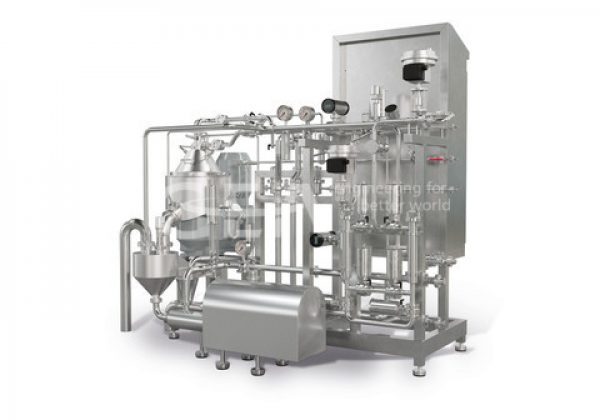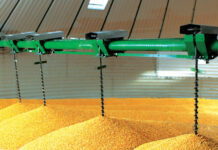The bowl of the KDB 3 separator contains a 3D printed segment insert for a continuous and guided product flow to the nozzles. (image: GEA)
For the production of spreadable and spoonable cheeses such as cream cheese, quark, greek yoghurt and skyr, GEA has added the KDB 3 separator as a new member to its GEA PureCon series, which includes self-cleaning separators, clarifying decanters and a range of nozzle separators of KDB and KDE types. With a capacity of up to 200 kg/h fresh cheese, the KDB 3 is the smallest centrifuge within this range and provides the same high performance as the well-established nozzle centrifuges with larger capacity. The result is an additive-free and high-quality range of consumer products which offer the traditionally known taste and creamy product texture even on small scale. Supplied on a fully piped and cabled skid, the KDB 3 allows for easy integration and operation from the start and reliable performance throughout the entire production cycle.
Being the only small-scale nozzle centrifuge for fresh cheese concentration on the market, the new KDB 3 provides a capacity of up to 800 kg/h milk for an output of fresh cheese of 15.5 to max 18 % DS and cream cheese “light” of 18 to max 26 % DS – depending on the milk type. The skid therefore perfectly fits to small-scale production like for specialties or for farm-based dairies, for pilot-scale and product development activities or for research and educational purposes.
More than just a centrifuge: concentrated process know-how on a skid
The synchronized setup of centrifuge, sensors and control devices ensures easy operation and a consistently high performance. The KDB 3 has a nozzle bowl with a geometrically optimized profile that ensures best-in-class clarification, concentration and cleaning. The bowl contains a 3D printed segment insert, which eliminates dead spaces and allows for a continuous and guided product flow to the nozzles. The 3D insert thus also enables automatic and more efficient cleaning, which not only saves cleaning media, but also eliminates manual, time-consuming cleaning.
A redesigned solids catcher facilitates a uniform and guided product flow to the cheese hopper. To extend the operating time while maintaining a constant product quality and to prevent negative thermal impact on the product caused by hot surfaces, the solids catcher as well as the separators’ hood are cooled during production. This also prevents product adherence to surfaces by means of the resulting condensate film.
During the whole process, sterile air is superimposed on the product room via a treatment system, preventing accumulation under the bowl. This prevents contamination with yeasts and moulds in all product-carrying spaces, including the solids catcher and cheese hopper, thus increasing product safety.
A range of additional options, clustered in three preconfigured feature packages “pro”, “plus“ and “prime”, is available for the new KDB 3 skid, providing an advanced, smart process flow control. Thus, for example the automatic whey discharge control to adjust the back pressure during separation and to activate overflow during cleaning. Another option is the automatic feed control, which ensures both the correct flow rate and thus a homogeneous feed to the machine as well as a constant dry substance of the discharged cheese. This prevents clogging due to too much feed flow or imbalances due to too less feed flow.
For monitoring the whey quality, a turbidity sensor can be integrated, which indicates when cleaning is required due to a decreasing separation efficiency. Another optional feature is a flow meter that monitors the whey flow in relation to the feed flow allowing a constant nozzle discharge supervision, blocked nozzles can thus be easily recognized. The KDB 3 skid comes standard with a level sensor for the fresh cheese hopper and an optionally available fresh cheese pump, which in combination provide a smooth and continuous product transfer for further processing.
To ensure continuous production by preventing nozzle blockages, either manual filters or automatic filters are used in the product feed, which – depending on the equipment variant – are switched over manually or automatically in the event of a blockage. In order to facilitate the selection of the right variant, GEA offers the possibility to run appropriate tests in advance of an investment. This can be done either in the Process Test Center at the GEA site in Oelde, Germany, or with a test plant at the customer’s site. Various financing options as well as leasing contracts for the plant including shipping and commissioning round off the range of services for the new KDB 3 Skid.








